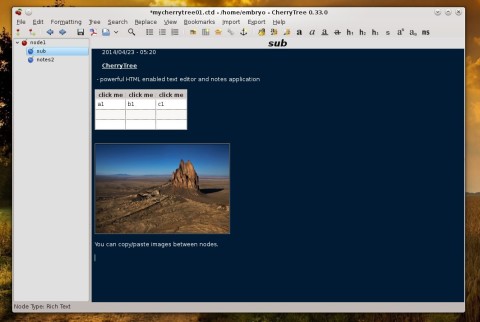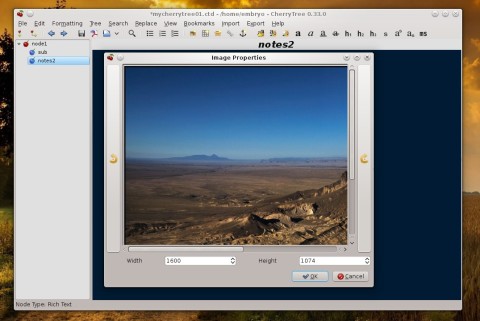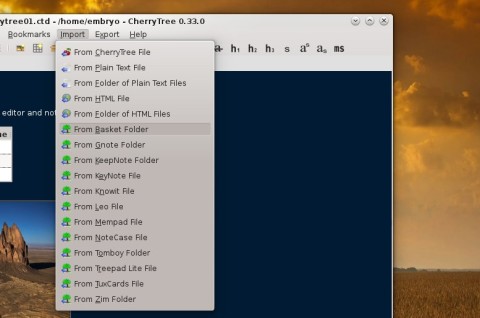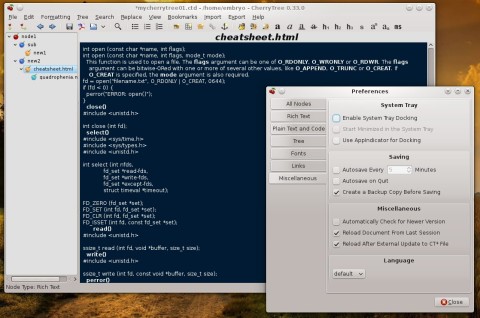CherryTree is a powerful notes-taking application written in Python and GTK, which organizes your notes into so-called nodes and has rich-text markup formatting options, support for tables and images and many other features.
The latest release, 0.33, adds many new features and a few bug fixes. Among these, CherryTree 0.33 comes with an import from HTML option, two new keyboard shortcuts, to enable/disable spell-checking and toggling focus between the tree and text, and several other improvements. The full changelog for this release is available here.
CherryTree organizes your notes into nodes and child nodes, and has rich formatting options. You can set headers, customize the font as bold, italic, or underlined, change font color and background.
You can also insert tables and images inside your notes, choosing the number of rows and columns for tables and the width and height (in pixels) for images. You can also copy/paste images between notes.
Upon inserting an image, CherryTree allows you to resize it:
Other features include bookmarks, spell-checking, search and replace, importing from a huge number of file created by various notes applications, exporting to HTML, PDF or plain text.
CherryTree allows you to import notes created by other applications, included Basket, KeepNote, GNote, Tomboy, HTML, plain text, Zim or NoteCase:
The preferences window allows you to configure various aspects regarding CherryTree. Here you can configure text wrapping, indentation or tab space, theme, fonts or system tray integration.
CherryTree can save your notes as SQLite database or XML files, with an option for password protection.
Ubuntu 14.04 comes with CherryTree 0.32 in the repositories and you can install it from the Ubuntu Software Center or by typing in a terminal sudo apt-get install cherrytree.
For 0.33, the PPA isn’t updated yet, but a DEB package is available on the official website. You can download the DEB package (direct link here) and double-click it, or open a terminal and install it using:







